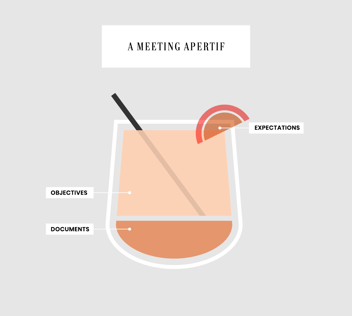
With remote work culture on the rise, more employees are realizing that the time they are spending behind a computer screen has increased significantly. For some, this new work dynamic has created less separation between their professional and personal life, and resulting in feeling some different side effects associated with working remotely. A 2021 survey concluded that 70% of respondents felt that their employers are not doing enough to prevent or relieve burnout at work. That’s more than half of the participants claiming they experience burnout and don’t get the support they need from employers. Based on this information, it’s more imperative than ever to prioritize wellness in the workplace.
Here are four ways that companies and their managers can boost preventative measures against burnout, and boost overall employee wellness.
Understand the Signs of Burnout
Burnout can be both physical and emotional, so in some cases, it can be hard to determine whether or not your employees are experiencing it. If you are a manager, take time to research and understand the effects of burnout so you can better accommodate your team’s needs. Say a co-worker subtly mentions their eyes feeling strained, or that they feel sluggish that day – provide them with a link to blue light glasses or a meditation app!
Even if you’re not a manager, you can keep an eye on your coworkers. If they’re showing signs of burnout, check in on them. It’s important to find a solution early on before it becomes a larger issue. Another thing to keep in mind is there could be many factors attributing to employee burnout, work-related or otherwise. Either way, it's important to get to the root of the cause sooner rather than later.
Genuinely Connect with Your Employees
Generally speaking, we might hesitate to open up about struggles with burnout for many reasons. No one wants to be labeled as a complainer or weak. And the thing is, struggling with burnout doesn’t make you either of those. Everyone needs to make an effort to create a more transparent and welcoming space for thoughtful discussions about these issues.
We can’t stress enough how important it is for company leaders to be human and show vulnerability. No matter what level you’re at on the corporate ladder, you can always make time to build relationships with your coworkers. Performing regular 1:1 check-ins is a great way to gain insight into an employee's headspace. Of course, you can discuss professional goals, accomplishments, and shortcomings with them, but make sure to offer the space to speak honestly, yet professionally. If you run into a situation where your perspectives don’t align, don't get discouraged. Instead, try to find a solution and offer support however you can. If an employee isn't satisfied in their current position, help them develop a career plan. Although professional conversations are important, make sure to check in with your team on a more human level. If an employee's performance at work is suffering, it might not be related to something work-related. Being aware of their personal situation may give you a better understanding. While you might not be able to make much of a change in their personal life, you can still make accommodations at work.
It’s essential to give your employees the individual attention and support they need. But your employees also need to feel supported by each other. Consider having more team-building activities. These activities can take place inside or outside of work hours. Set them up for what suits your company’s schedule best. Some companies like to plan a team retreat, but a weekly 15-minute team meeting can also foster a sense of community on a smaller scale. The point is, if you make time for team building, make sure it's consistent and purposeful. Remember, the best teams are the ones with the strongest bonds. Do you have the feeling that your team could be more connected? Start incorporating the six pillars of high-performance into your daily workflow with them.
On a larger scale, some companies have become more transparent about how they encourage wellness in their culture. The Gopuff delivery company allows its employees to review and rate their satisfaction with leadership, culture, and other workplace aspects. Similarly, the insurance company State Farm has its work happiness score featured at the top of its company profile report on Indeed. Some companies choose to opt-out of features like this on public profiles but it's important to recognize the companies that do include it for transparency.
Make Meaningful Workspace Changes
Whether it's onsite or remote, your work environment can make all the difference between feeling inspired and feeling anxious. For those working onsite, consider creating a more open and collaborative space. This could involve fewer cubicles and walls, and meeting rooms that are with glass windows instead of walls. Consider replacing uncomfortable furniture with more ergonomic and updated alternatives like a kneeling chair. They look uncomfortable but they really help improve posture! Using technology is a universal experience for both remote and onsite workspaces. And, most of the time, we find ourselves scrolling on our phones after work hours. It’s no surprise that too much screen time can lead to headaches and fatigue. To ease eye strain, make sure you’re using anti-fatigue screen protectors on office devices.
Also, consider giving your remote employees a stipend for workspace expenses. That way, they can set up a dedicated space for work without the financial stress. Plus, adding a succulent to your desk never hurt anyone! Encourage all employees, remote or onsite, to take some “me time” throughout the day. Whatever they decide to do with that time, it’s sure to give them a little (but much needed) recharge. Not to mention, it will also make an overwhelming workload seem more manageable. And yes, it can be as simple as taking the dog for a walk and getting some sunshine!
Provide Wellness Resources
There are many resources companies can equip their employees with to help alleviate burnout.
Here are just a few examples:
-
Partner with local gyms for employee memberships
-
Provide company subscriptions to meditation apps or audiobooks
-
Have healthier snacks in the office
-
Offer an Employee Assistance Program
-
Guide employees to professional help
-
Host wellness-focused workshops
The bottom line is that the most effective way to prevent employee burnout is to listen to your employees. However, even if they aren’t expressing burnout verbally, they could be displaying symptoms. It’s crucial to understand the early signs and address them as soon as possible. You can provide support by taking action where you can or offering resources if you’re unsure how to help.




